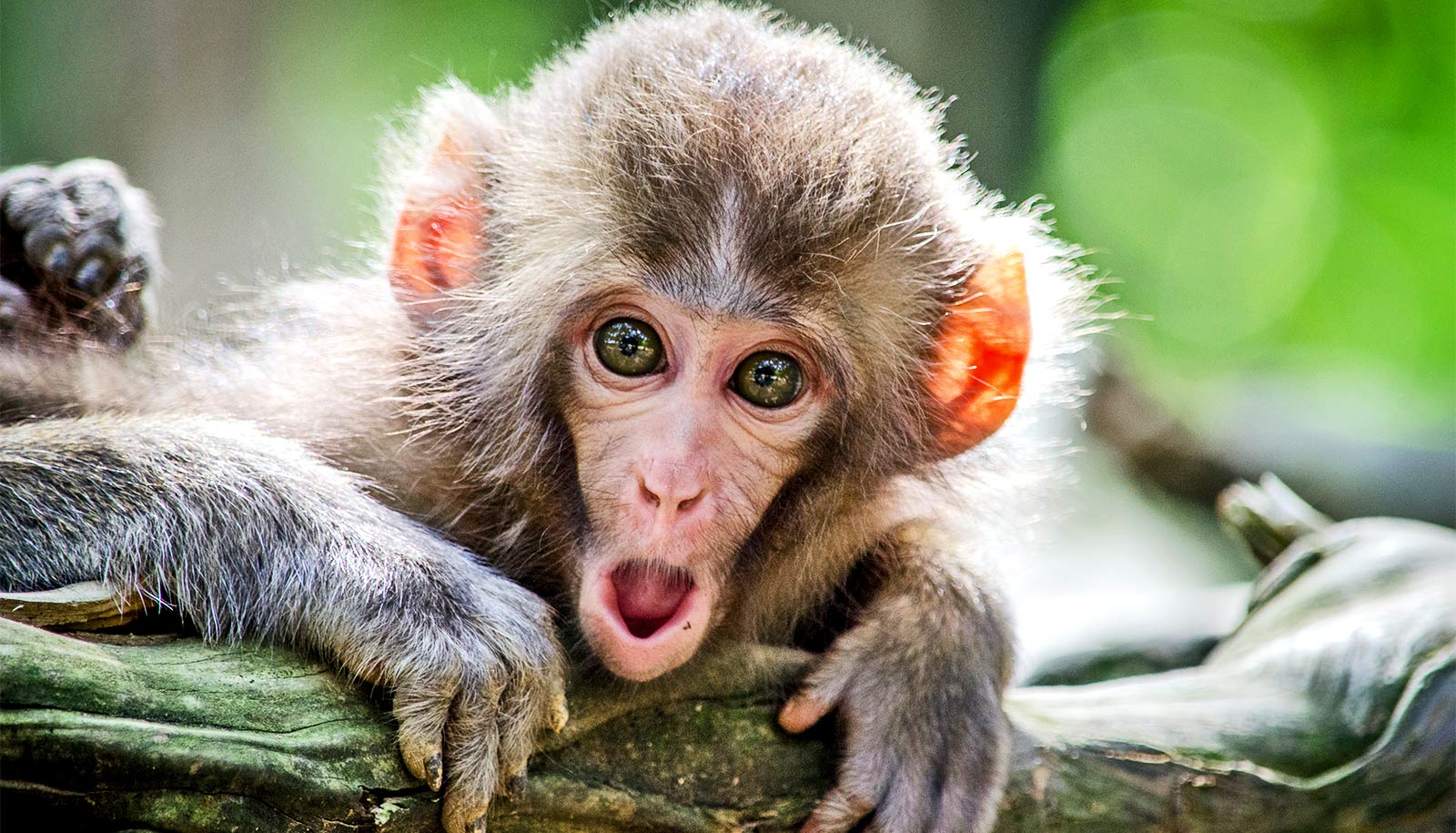New research makes the case that one non-human species—the rhesus macaque—has a conscious awareness of the world around it that mirrors the human experience.
Scientists and philosophers have asked whether humans are the only species that experiences the world consciously for millennia, yet finding answers—or even appropriate ways to ask the question—has proved elusive. Now researchers have devised an ingenious way to solve the riddle.
The study appears in the Proceedings of the National Academy of Sciences.
“People have wondered for a long time whether animals experience the world the way we do, but it’s been difficult to figure out a good way to test this question empirically,” says first author Moshe Shay Ben-Haim, a postdoctoral fellow at Yale University.
Researchers have known for a long time that people can be influenced by unconscious subliminal cues—visual stimuli presented just outside of our threshold for conscious awareness, says co-senior author Laurie Santos, a professor of psychology. “We tend to show different patterns of learning when presented with subliminal stimuli than we do for consciously experienced, or supraliminal stimuli.”
If monkeys show the same “double dissociation” pattern that humans do, it would mean that monkeys probably experience the supraliminally presented stimuli in the same way as people do—at a conscious visual experience.
The researchers came up with a new way to explore whether macaques also exhibit a difference in learning when stimuli are experienced consciously versus non-consciously.
In a series of experiments, they had monkeys and humans guess whether a target image would appear on the left or right side of a screen. Before the target appeared, participants received a visual cue—a small star—on the side opposite of where the target would subsequently appear.
The researchers varied whether the cue was presented supraliminally or subliminally. When the cue was presented for a few seconds, human participants successfully learned that the target would appear in the opposite location from the cue. But when the cue was presented subliminally—quickly enough that it escaped people’s conscious perception—participants showed a different pattern of performance; they continued to choose the side that was subliminally cued, failing to learn the rule that the cue predicted the opposite side.
Surprisingly, the researchers found that monkeys showed exactly the same response patterns as the people did: like humans, macaques successfully looked to the target location when the cues were presented consciously, but showed the reverse pattern for subliminal cues. This striking result suggests that monkeys have two levels of processing just as humans do, one of which must be conscious.
“These results show that at least one non-human animal exhibits both non-conscious perception as well as human-like conscious visual awareness.” says Ben-Haim. “We now have a new non-verbal method for assessing whether other non-human creatures experience visual awareness in the same way as humans.”
Additional coauthors are from Hebrew University and Yale.
Source: Yale University



